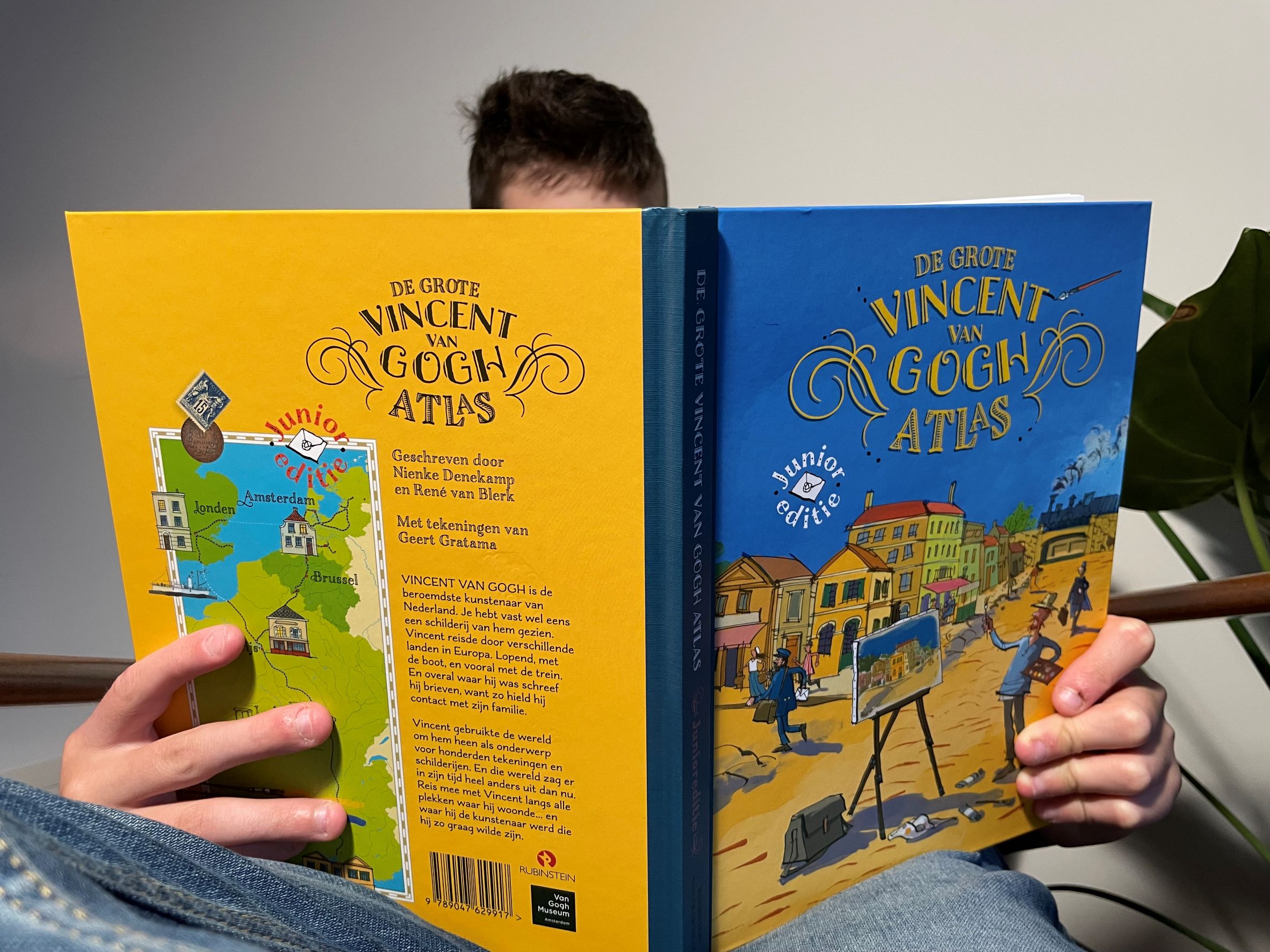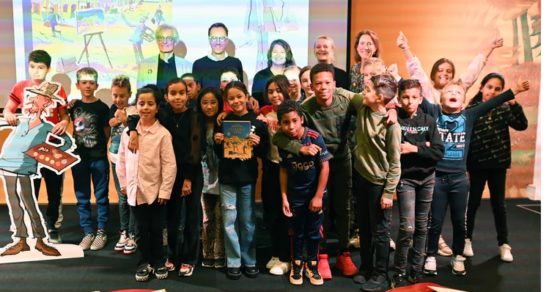On the map: children’s atlas plots the life of Vincent van Gogh


Seeing Van Gogh through a child’s eyes is an education for us all: that was the message at the launch of a junior ‘atlas’ explaining the artist’s life and travels.
‘What this book does is to follow the story of Van Gogh like an atlas, telling his life story in a fun way,’ said Emilie Gordenker, director of the Van Gogh Museum at the book launch in Amsterdam.
‘This way of telling his story means you might see yourself in his tale: sometimes he had a tough time and sometimes he was doing really well. Even if you know a lot about art, you can learn from a story told from [a child’s] perspective,’ she told a class of group 7 children from primary school Het Bovenland on Wednesday.
With illustrations from artist Geert Gratama, photographs, letters and detailed maps, The Vincent van Gogh Atlas Junior Edition plots the 19th century artist’s life and works alongside his multiple moves. It begins in the village of Zundert in North Brabant in 1853, and travels with him through 19 different locations in the Netherlands, England, Belgium and France, where he died of a self-inflicted gunshot wound in 1890.
It traces his career with the help of his 800 letters, mostly to his brother Theo, 850 paintings and 1300 sketches that have survived. Van Gogh’s travels were made by boat, steam train and also on foot – including a misadventure where he tramped for miles to show his work to a famous artist but, once he got to his door, was overcome with nerves and went home again.
An adult version of the atlas was produced in 2015 and this one – published in Dutch and in English – is aimed at children of nine and upwards.

René van Blerk, senior educator at the Van Gogh Museum who wrote the book with author and journalist Nienke Denekamp, said Van Gogh was an inspiration. ‘I think that we have a wonderful story about a truly extraordinary man,’ he said.
‘He was someone looking for what he wanted to be, who kept searching, and kept the faith. Perhaps you don’t know what you want to be, and neither did he, but he found it. He was so convinced that what he was doing was good that he kept going, even when people didn’t appreciate it at all. That’s an extraordinary message that the book tells.’
‘Vincent was unusual in a time when everyone was so used to painting in a certain way, a way that everyone liked. He did it in his own way, a completely different way: he saw what all of the other painters were doing, he took it on board, but made his own art. That is extraordinary and it influenced other painters after him.’
The book, printed by Uitgeverij Rubinstein and with a subsidy from the Nederlands Letterenfonds, was launched with a special cake. The first copy was gifted to the class of 10 and 11-year-olds from Amsterdam.
‘Unlike a piece of cake,’ Gordenker reassured them, ‘it can never be eaten up and you can always read it again.’
Thank you for donating to DutchNews.nl.
We could not provide the Dutch News service, and keep it free of charge, without the generous support of our readers. Your donations allow us to report on issues you tell us matter, and provide you with a summary of the most important Dutch news each day.
Make a donation